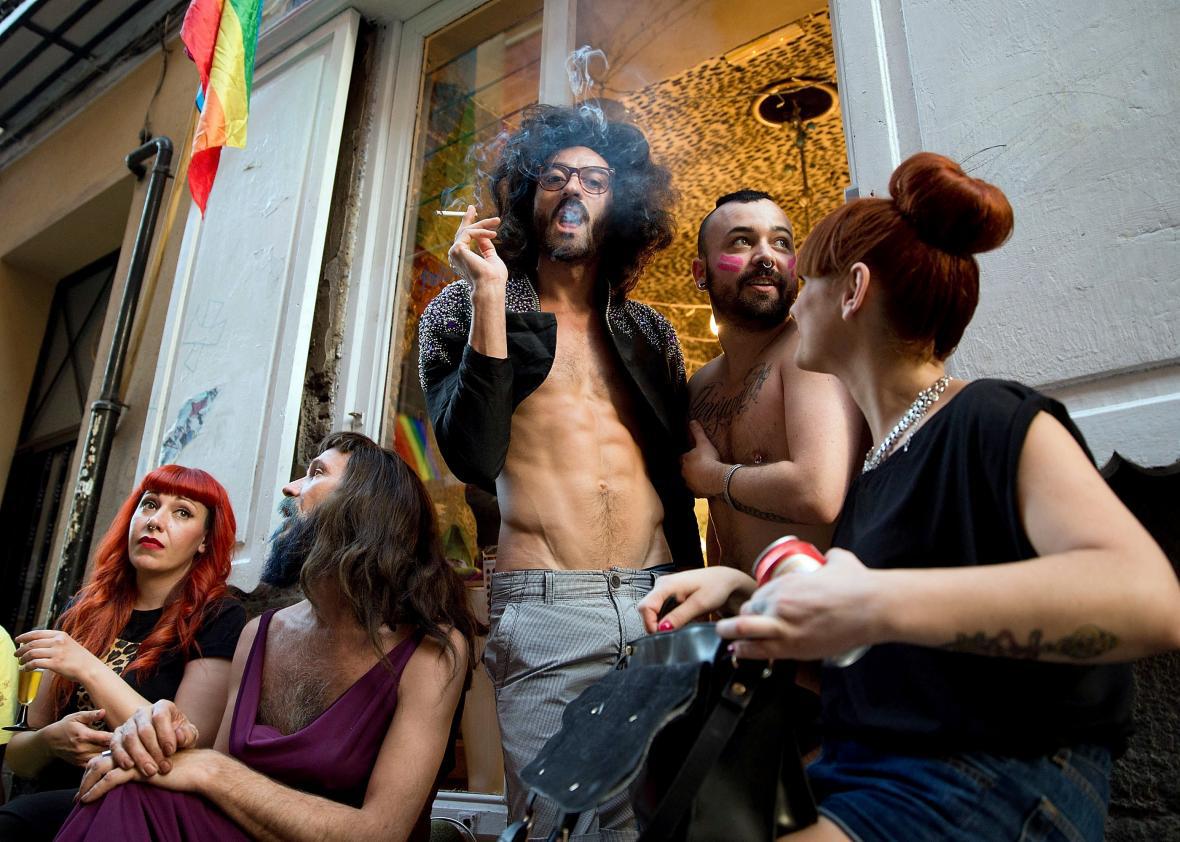In “When Everyone Can Be Queer, Is Anyone?” a piece that will run this weekend in the New York Times Magazine, journalist Jenna Wortham tackles the tricky meaning, history, and future of the word queer. (Full disclosure: We emailed about the topic while she was writing the article.) The heart of her argument, from which the title of her piece is derived, is that “[t]he radical power of ‘queer’ always came from its inclusivity.” This very inclusivity, she argues, now threatens the meaning of the word, by making it so broad that anyone—including straight people—can take it on.
While I appreciate Wortham’s attempt to grapple with such a thorny subject, her focus on inclusivity is a misreading of the fundamental nature of the word queer. I would argue that queer’s inclusivity is actually a byproduct of a much more salient and powerful aspect of the word: its focus on our culture’s sexual hierarchy.
Almost all of our labels for sexuality or gender identity fall into two camps: words that describe people who take certain actions (sodomite, cross-dresser, etc.), and words that describe people who ascribe to certain identities (lesbian, trans man, etc.). Queer, however, is different. As both an insult and a reclaimed political label, it has always referenced marginalized sexualities and gender identities—the key word here being marginalized. It isn’t about your specific sexual behaviors or identities; rather, it’s about how those things are appraised by the culture around you. This is the essence of queerness: To be queer is to be judged, and to find community with others who have been judged similarly. This is less a matter of radical “inclusivity” and more a kind of qualifying criteria for entry.
Queer, therefore, always assumes a rejection of heteronormativity—the desire to assimilate and be like “normal” heterosexuals—because that very normalcy requires that some people, somewhere, be judged for their consensual sexual practices. For some to be sexually “normal,” after all, others must be sexually deviant. Queer is the battle cry of deviancy.
When we remove the focus on stigmatization from the word queer, we evacuate it of the only thing that made it a coherent identity in the first place. By focusing instead on inclusivity, Wortham’s article actually does the very thing it worries about: It depoliticizes the word. Queer goes from being a label that allowed the development of community across sexual identities to one that disavows that community. It is the difference between “I am a lesbian who is against the oppression of sexuality generally, therefore I identify as queer,” and “I identify as queer because it does not pin me down or connect me to any group of people or actions.” But without its political center, the word queer is so meaningless that it seems unlikely that this kind of usage will overtake its original sense. There’s simply too little there to hold on to, and the alternative political meaning will always be uncomfortable for those who use the word in other ways.
Queer does stand on the precipice of change, but it is not exactly the one Wortham describes. The queer movement of the early 1970s—which demanded a wholesale revolution against the patriarchy and all sexual norms—has given way to an LGBTQ movement that asks for equal rights. This is a more achievable set of goals, and legal equality is of course a good thing. But formal equality inside a hierarchical system that still privileges monogamy, marriage, the child-rearing couple, etc., is inherently anti-queer.
Gains in legal recognition don’t mean queer is going to disappear anytime soon, however. Marginalization is a byproduct of many things, not just legal exclusion, and not everyone granted those rights will rush to take them up uncritically. But all doors go two ways, and as we reach for equality, heteronormativity reaches back for us. Societal pressure is a powerful force, and the more we assert our rights to get married and have children (for instance), the more we will be judged and informally penalized for not doing those things. What was once banned will now nearly be required.
In 1984, theorist Gayle Rubin introduced the idea of “the charmed circle” as a way of visualizing how different sexual practices are valued in our culture. At the center of the circle are a variety of privileged (i.e. “good” or “natural”) kinds of sex—things like “vanilla,” “heterosexual,” “free,” “at home,” and “same generation.” In the outer ring are their sexual antonyms—“S/M,” “homosexual,” “for money,” “in the park,” “cross-generational,” etc.
It may well be that in our lifetime, homosexual sex that otherwise meets all of the other criteria for entrance into the center of the charmed circle will no longer be considered deviant. Certain kinds of gay men and lesbians, then, may no longer be queer. But even that will be contingent on many other factors, because real change always occurs in a piecemeal, herky-jerky fashion, and what might be normal in Tucson, Arizona, might not be acceptable in Albany, New York. Our country is a palimpsest of different sexual hierarchies laid atop one another, always competing for representation in our legal codes and our popular entertainment. But because there will always be hierarchies, queers will always exist—they may just not look, act, or identify in any of the ways we do now.
